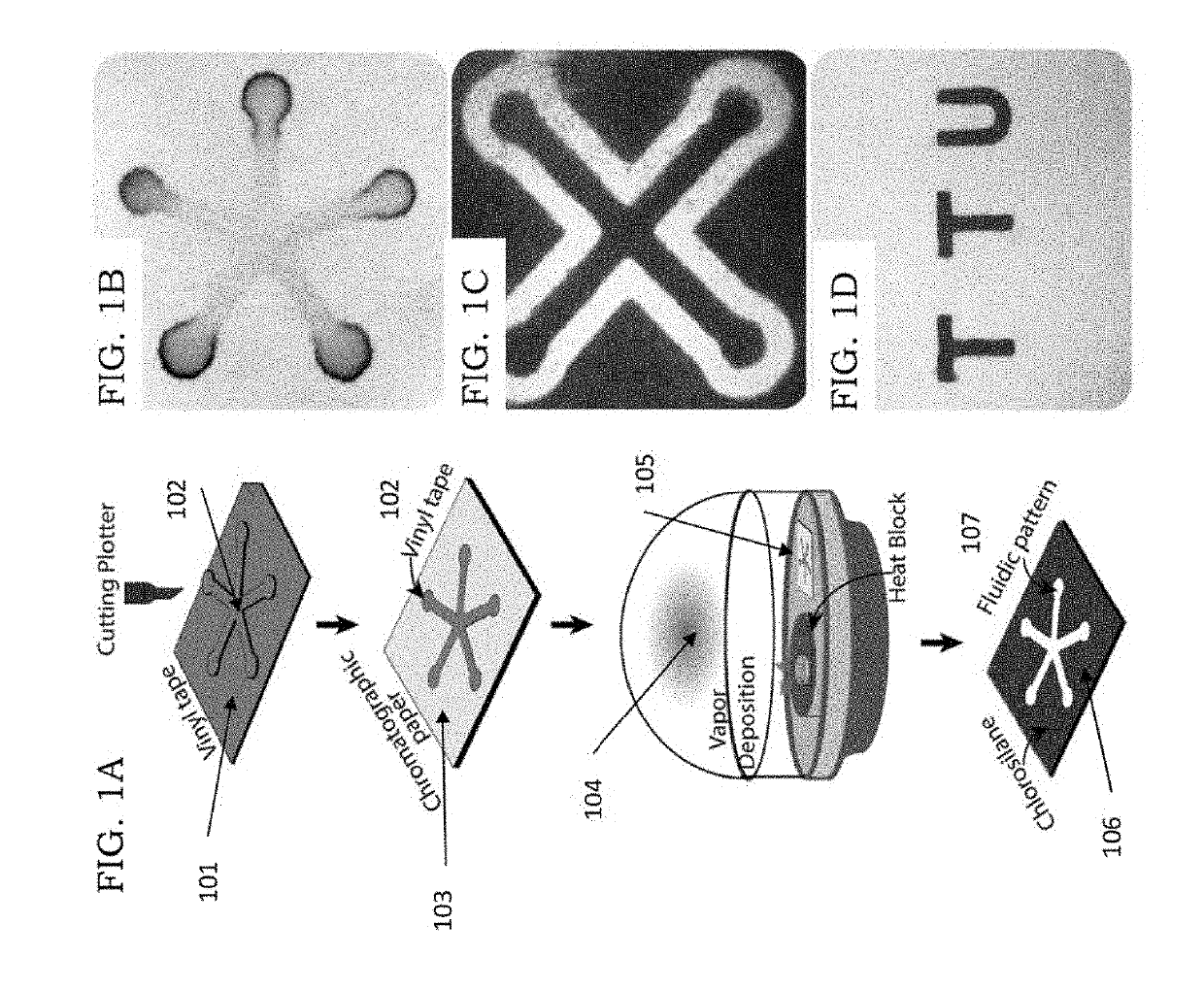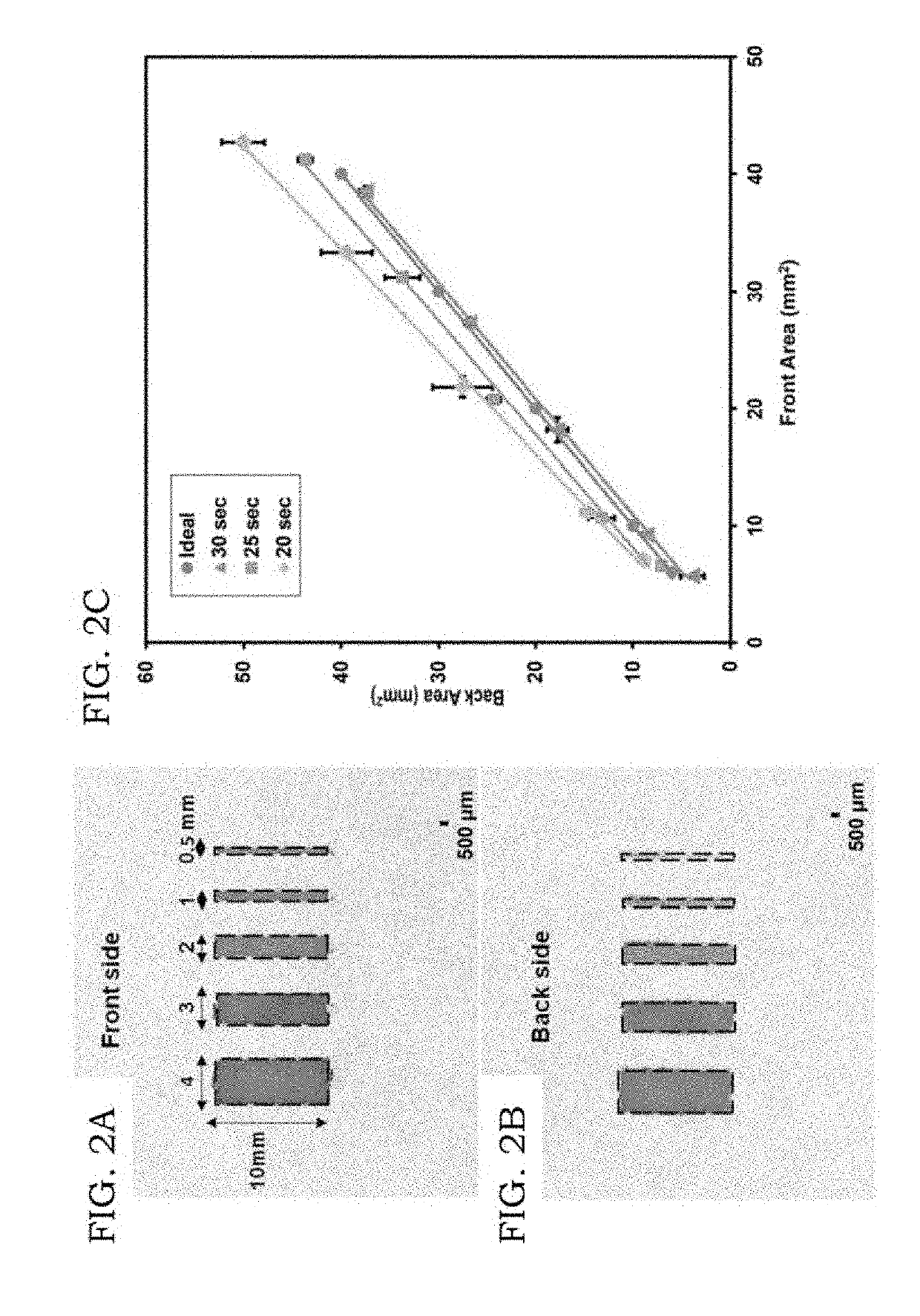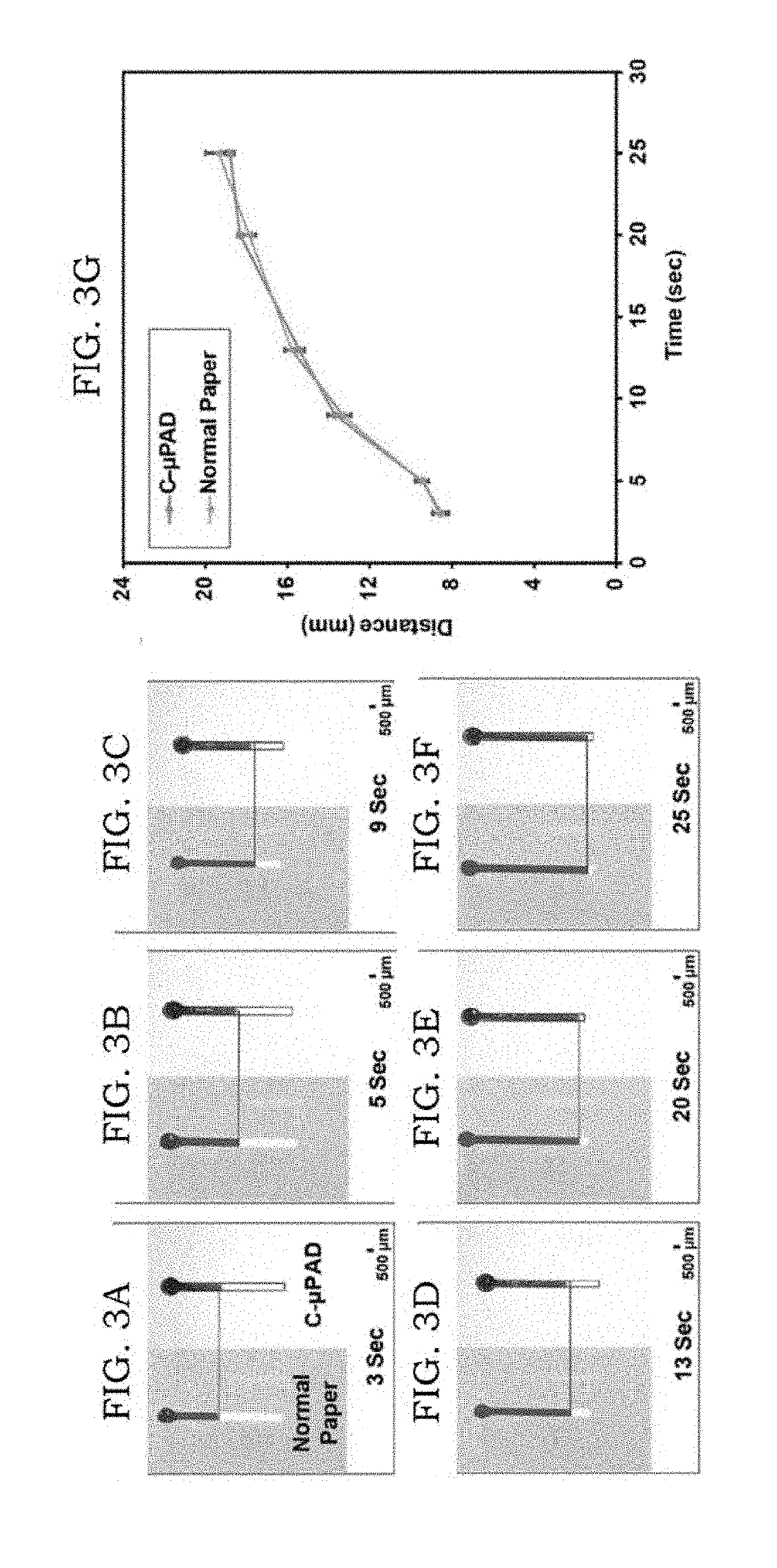Chemically patterned microfluidic paper-based analytical device (c-µpad) for multiplex analyte detection
a microfluidic paper and analytical device technology, applied in the field of microfluidic devices, can solve the problems of detection limits twice as good as those obtained for this single-plex platform, and achieve the effects of minimizing cross-reaction with chelating agents, simple, fast and sensitive, and maximizing reaction uniformity
- Summary
- Abstract
- Description
- Claims
- Application Information
AI Technical Summary
Benefits of technology
Problems solved by technology
Method used
Image
Examples
examples
1. Glucose Assay.
[0058]To show bioassay capabilities of C-μPAD, glucose assays were demonstrated on well-spot C-μPAD and lateral flow C-μPAD platforms using standard glucose samples. FIG. 4A shows that color intensity increases as glucose concentration increases from 0 to 160 mg / dL in glucose well-spot C-μPAD. Based on the LOD calculation, 13 mg / dL of LOD was achieved in well-spot C-μPAD, which is equivalent to the LOD of the commercially available glucose meter (AccuCheck). Furthermore, a lateral flow glucose assay was developed by using a dumbbell-shaped channel. A lateral flow glucose assay using lateral flow C-μPAD was developed to demonstrate the additional step of sample transport to the spotted detection reagents. A lateral flow C-μPAD with dumbbell-shaped patterns was created for this lateral flow glucose assay. 5 μL of assay reagent was physically immobilized and dried onto reaction wells. 2.5 μL of various concentration of glucose solutions such as 0, 40, 80, 120, and 160 ...
PUM
| Property | Measurement | Unit |
|---|---|---|
| concentrations | aaaaa | aaaaa |
| temperature | aaaaa | aaaaa |
| vapor pressure | aaaaa | aaaaa |
Abstract
Description
Claims
Application Information
 Login to View More
Login to View More - R&D
- Intellectual Property
- Life Sciences
- Materials
- Tech Scout
- Unparalleled Data Quality
- Higher Quality Content
- 60% Fewer Hallucinations
Browse by: Latest US Patents, China's latest patents, Technical Efficacy Thesaurus, Application Domain, Technology Topic, Popular Technical Reports.
© 2025 PatSnap. All rights reserved.Legal|Privacy policy|Modern Slavery Act Transparency Statement|Sitemap|About US| Contact US: help@patsnap.com



